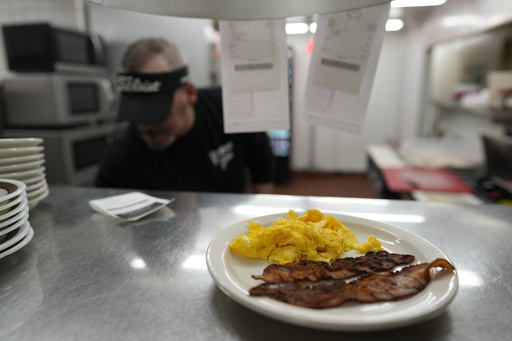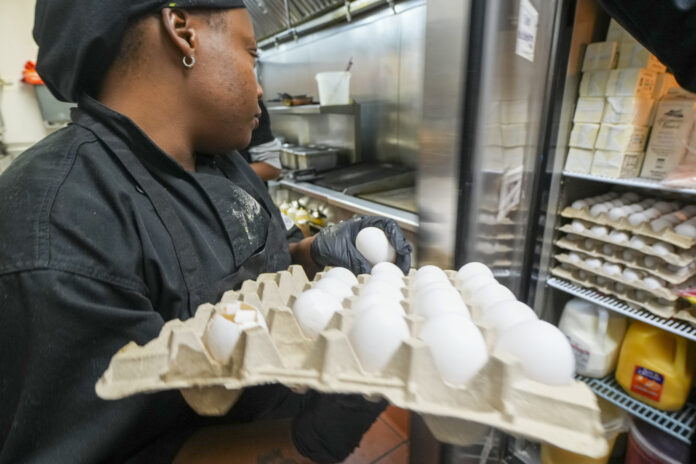Egg prices are cracking records. A dozen eggs can now cost up to $10! It’s a huge jump from just $2.50 a year ago. But what’s causing this scramble for higher prices?
Avian Flu: The not-so-simple explanation
The bird flu outbreak is one major factor. Over 159 million chickens and turkeys have been slaughtered due to the virus. Nearly 47 million birds were lost just since December. This is making eggs scarce and pushing up prices.
Breakfast demand is exploding
Americans are eating more eggs than ever. The love for breakfast is booming. More and more people are dining out for breakfast. Restaurant chains like First Watch have expanded massively, with over 570 locations now. The appetite for breakfast is undeniable. It’s not just sit-down spots—fast-food chains are cashing in too. Starbucks, for instance, offers 12 egg-filled breakfast items. Wendy’s has 10.

The numbers don’t lie
In fact, over 6,400 new breakfast spots opened last year alone. That’s a 23% increase from 2019. The demand for eggs from these restaurants is rising fast. A report by Circana shows morning meals accounted for 21% of all restaurant visits in 2024. Breakfast sandwiches, the top pick, are made with eggs in 70% of cases.
The pandemic changed the game
Post-pandemic, more people craved comfort food, and breakfast became the go-to option. With inflation making dinner more expensive, eating out for breakfast and lunch seemed like a better deal. The increase in demand for eggs at restaurants has turned the industry upside down.
Before COVID, eggs sat comfortably in kitchens, as many restaurants sold supplies to consumers. The pandemic also reversed years of decline in egg consumption. After decades of declining demand, eggs became trendy again. Nutritional studies and marketing made eggs an affordable protein choice. From 2008 to 2019, egg consumption surged. But the flu and demand swings have caused a new problem.
Cage-free laws add complexity
To make matters worse, animal rights movements have driven major chains, like McDonald’s, to use only cage-free eggs. These laws in California and Colorado have further complicated the egg market. The growing push for cruelty-free food means fewer suppliers can meet demand.
Egg price hike hits restaurants hard
The high wholesale prices are a headache for eateries. Just last week, the national average hit $7.34 per dozen, a massive 51% increase since January. Many restaurants are facing tough decisions. Some are adding surcharges to their bills to cover the costs. Others, like Waffle House, have increased menu prices to help absorb the shock.
Chains like First Watch, which heavily rely on eggs, are finding ways to adapt. They are increasing the size of non-egg items like meat and potatoes to balance out the costs. So far, they haven’t raised prices on eggs. But the industry is holding its breath as more bird flu outbreaks could worsen the situation.
The flu’s ability to mutate and spread is a growing concern. Experts fear it could affect cattle populations soon, which would cause massive price volatility in beef. If that happens, more menu changes could be on the way. But for now, the focus is on eggs.
Egg prices are here to stay
Eggs are an essential part of the American diet. While the price spike is painful for many, the demand for eggs continues to grow. Restaurants are doing their best to manage the situation without pushing prices too high. But with ongoing challenges from bird flu and changing consumer trends, the cost of eggs may stay high for the foreseeable future.




